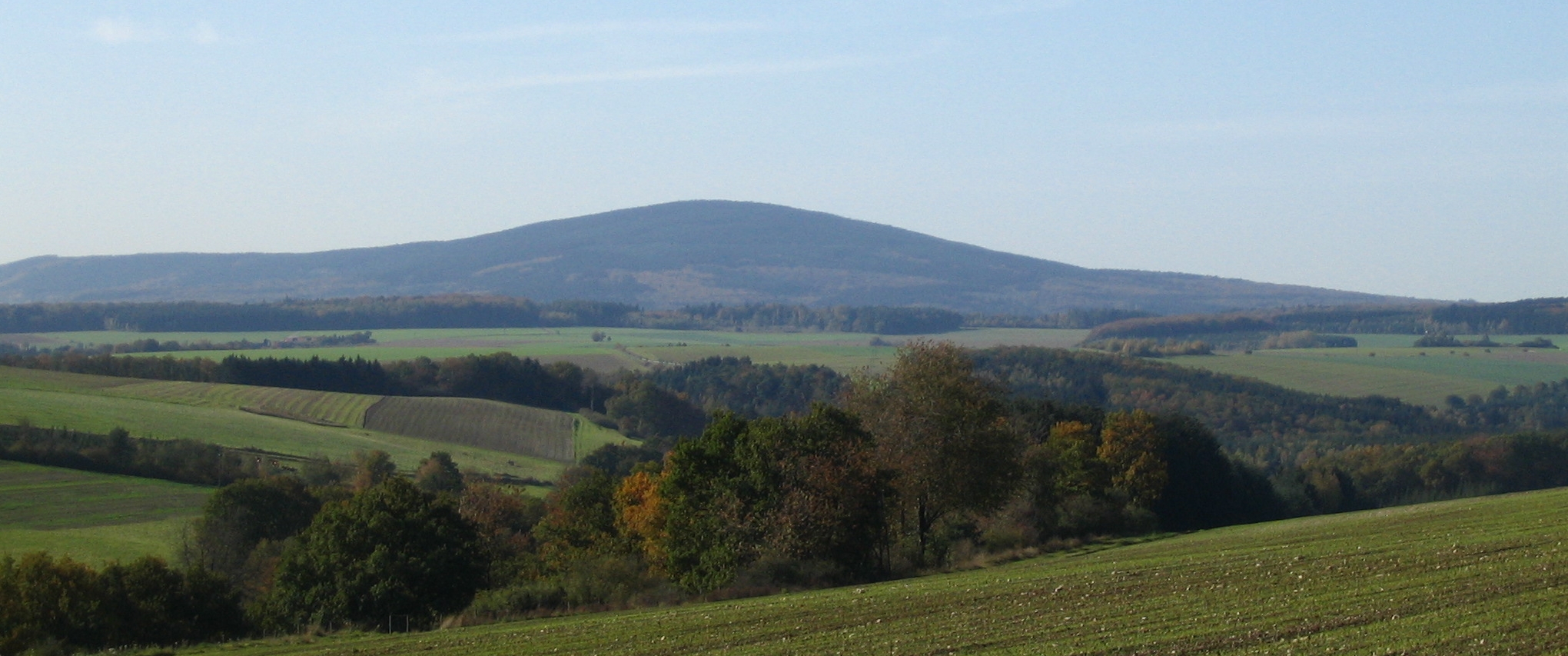|
Langweiler, Birkenfeld
Langweiler is an ''Ortsgemeinde'' – a municipality belonging to a ''Verbandsgemeinde'', a kind of collective municipality – in the Birkenfeld district in Rhineland-Palatinate, Germany. It belongs to the ''Verbandsgemeinde'' Herrstein-Rhaunen, whose seat is in Herrstein. For its particularly attractive location with a view of the Wildenburg (a nearby castle) and the Steinbachsee (a lake), the inhabitants sometimes call their municipality the ''Perle des Hochwalds'' (“Pearl of the High Forest”). Geography Location The municipality lies in the Hunsrück. The municipal area is 91.7% wooded. Langweiler's elevation is some 530 m above sea level. Constituent communities Also belonging to Langweiler is the outlying homestead of Forsthaus Langweiler. History The area that is now Langweiler must already have been settled in Roman times. When the children's home was being built in 1921, workers happened upon two cists, one of which had a wall around it. Among other grave goods ... [...More Info...] [...Related Items...] OR: [Wikipedia] [Google] [Baidu] |
Ortsgemeinde
A Verbandsgemeinde (; plural Verbandsgemeinden) is a low-level administrative division, administrative unit in the Germany, German States of Germany, federal states of Rhineland-Palatinate and Saxony-Anhalt. A Verbandsgemeinde is typically composed of a small group of villages or towns. Rhineland-Palatinate The state of Rhineland-Palatinate is divided into 163 Verbandsgemeinden, which are municipal associations grouped within the 24 Districts of Germany, districts of the state and subdivided into 2,257 Ortsgemeinden (singular Ortsgemeinde) which comprise single settlements. Most of the Verbandsgemeinden were established in 1969. Formerly the name for an administrative unit was ''Amt (political division), Amt''. Most of the functions of municipal government for several municipalities are consolidated and administered centrally from a larger or more central town or municipality among the group, while the individual municipalities (Ortsgemeinden) still maintain a limited degree of ... [...More Info...] [...Related Items...] OR: [Wikipedia] [Google] [Baidu] |
Amt (country Subdivision)
Amt is a type of administrative division governing a group of municipalities, today only in Germany, but formerly also common in other countries of Northern Europe. Its size and functions differ by country and the term is roughly equivalent to a US township or county or English shire district. Current usage Germany Prevalence The ''Amt'' (plural: ''Ämter'') is unique to the German '' Bundesländer'' (federal states) of Schleswig-Holstein, Mecklenburg-Western Pomerania and Brandenburg. Other German states had this division in the past. Some states have similar administrative units called ''Samtgemeinde'' (Lower Saxony), ''Verbandsgemeinde'' (Rhineland-Palatinate) or ''Verwaltungsgemeinschaft'' (Baden-Württemberg, Bavaria, Saxony, Saxony-Anhalt, Thuringia). Definition An ''Amt'', as well as the other above-mentioned units, is subordinate to a ''Kreis'' (district) and is a collection of municipalities. The amt is lower than district-level government but higher than municipal ... [...More Info...] [...Related Items...] OR: [Wikipedia] [Google] [Baidu] |
Charcoal
Charcoal is a lightweight black carbon residue produced by strongly heating wood (or other animal and plant materials) in minimal oxygen to remove all water and volatile constituents. In the traditional version of this pyrolysis process, called charcoal burning, often by forming a charcoal kiln, the heat is supplied by burning part of the starting material itself, with a limited supply of oxygen. The material can also be heated in a closed retort. Modern "charcoal" briquettes used for outdoor cooking may contain many other additives, e.g. coal. This process happens naturally when combustion is incomplete, and is sometimes used in radiocarbon dating. It also happens inadvertently while burning wood, as in a fireplace or wood stove. The visible flame in these is due to combustion of the volatile gases exuded as the wood turns into charcoal. The soot and smoke commonly given off by wood fires result from incomplete combustion of those volatiles. Charcoal burns at a higher temper ... [...More Info...] [...Related Items...] OR: [Wikipedia] [Google] [Baidu] |
Idar Forest
The Idar Forest (German: ''Idarwald'', Celtic: ''"id ar"'' - hill forest above the land) is part of the Hunsrück low mountain range in the German federal state of Rhineland-Palatinate, Germany. Geography The Idar Forest lies in the districts of Bernkastel-Wittlich and Birkenfeld in the northeast of the Saar-Hunsrück Nature Park. It lies more or less in the triangle formed by the villages of Morbach (in the northwest), Rhaunen (northeast) and Idar-Oberstein (southeast), but apart from Morbach – does not extend as far as these places. The underlying rocks are primarily made up of Lower Devonian quartzites. Mountains Amongst the highest mountains in the Idar Forest are: * An den zwei Steinen (766 m) * Kahlheid (766 m) * Steingerüttelkopf (757 m) * Ruppelstein (755 m) * Idarkopf (746 m) - crowned by the Idarkopf Tower * Usarkopf (724 m) Bodies of water Streams The following streams rise in, or on the edge of, the Idar Forest: * Dhron * Idarbach (Nahe) - rises ... [...More Info...] [...Related Items...] OR: [Wikipedia] [Google] [Baidu] |
Thirty Years' War
The Thirty Years' War was one of the longest and most destructive conflicts in European history The history of Europe is traditionally divided into four time periods: prehistoric Europe (prior to about 800 BC), classical antiquity (800 BC to AD 500), the Middle Ages (AD 500 to AD 1500), and the modern era (since AD 1500). The first early ..., lasting from 1618 to 1648. Fought primarily in Central Europe, an estimated 4.5 to 8 million soldiers and civilians died as a result of battle, famine, and disease, while some areas of what is now modern Germany experienced population declines of over 50%. Related conflicts include the Eighty Years' War, the War of the Mantuan Succession, the Franco-Spanish War (1635–1659), Franco-Spanish War, and the Portuguese Restoration War. Until the 20th century, historians generally viewed it as a continuation of the religious struggle initiated by the 16th-century Reformation within the Holy Roman Empire. The 1555 Peace of Augsburg atte ... [...More Info...] [...Related Items...] OR: [Wikipedia] [Google] [Baidu] |
Kempfeld
Kempfeld is an ''Ortsgemeinde'' – a Municipalities of Germany, municipality belonging to a ''Verbandsgemeinde'', a kind of collective municipality – in the Birkenfeld (district), Birkenfeld Districts of Germany, district in Rhineland-Palatinate, Germany. It belongs to the ''Verbandsgemeinde'' Herrstein-Rhaunen, whose seat is in Herrstein. Geography Location The municipality lies on the ''Deutsche Edelsteinstraße'' (“German Gem Road”) in the southern Hunsrück between the Idar Forest in the north and the town of Idar-Oberstein in the south. Constituent communities Also belonging to Kempfeld are the Hamlet (place), hamlet of Katzenloch and the outlying homesteads of Auf dem Steinberg, Herrenflur and Wildenburg. Village’s name Kempfeld was originally settled by a man named Campo. On the other hand, other researchers derive the name from the Latin ''campus'', meaning field (and since ''Feld'' means the same, the name would therefore mean “Field Field”). This hypothesis ... [...More Info...] [...Related Items...] OR: [Wikipedia] [Google] [Baidu] |
Blood Court
High, middle and low justices are notions dating from Western feudalism to indicate descending degrees of judicial power to administer justice by the maximal punishment the holders could inflict upon their subjects and other dependents. Low justice regards the level of day-to-day civil actions, including voluntary justice, minor pleas, and petty offences generally settled by fines or light corporal punishment. It was held by many lesser authorities, including many lords of the manor, who sat in justice over the serfs, unfree tenants, and freeholders on their land. Middle justice would involve full civil and criminal jurisdiction, except for capital crimes, and notably excluding the right to pass the death penalty, torture and severe corporal punishment, which was reserved to authorities holding high justice, or the ''ius gladii'' ("right of the sword"). Pyramid of feudal justice Although the terms ''high'' and ''low'' suggest a strict subordination, this was not quite the case ... [...More Info...] [...Related Items...] OR: [Wikipedia] [Google] [Baidu] |
Capon
A capon (from la, cāpō, genitive ''cāpōnis'') is a cockerel (rooster) that has been castrated or neutered, either physically or chemically, to improve the quality of its flesh for food, and, in some countries like Spain, fattened by forced feeding. History The origins of caponised chickens are contested. They were known in ancient China as well as in ancient Greece and ancient Rome. An early record of caponisation is found under the Roman Republic: the Lex Faunia of 162 BC forbade fattening hens to conserve grain rations, so the Romans instead castrated roosters, which resulted in a doubling of size. It was also practiced later throughout medieval times, with gastronomic texts describing capons as preferred poultry since the ordinary fowl of the farmyard was regarded as peasant fare and "popular malice crediting monks with a weakness for capons." France is internationally renowned for maintaining a strong caponisation tradition with widespread and established industr ... [...More Info...] [...Related Items...] OR: [Wikipedia] [Google] [Baidu] |
Waldgrave
The noble family of the Waldgraves or Wildgraves (Latin: ''comites silvestres'') descended of a division of the House of the Counts of Nahegau in the year 1113. When the (a countship named after the river Nahe) split into two parts in 1113, the counts of the two parts, belonging to the House of Salm, called themselves Wildgraves and Raugrave The Raugraves were a German noble family, which had its center of influence in the former Nahegau. They descended from the Emichones (Counts of Nahegau). History First family in the 12th until 15th centuries The family of the Raugraves (the ...s, respectively. They were named after the geographic properties of their territories: Wildgrave (german: Wildgraf; la, comes sylvanus) after ("forest"), and Raugrave (german: Raugraf; la, comes hirsutus) after the rough (i.e. mountainous) terrain. References German noble families Noble families of the Holy Roman Empire {{Noble-stub ... [...More Info...] [...Related Items...] OR: [Wikipedia] [Google] [Baidu] |
Allenbach
Allenbach is an ''Ortsgemeinde'' – a municipality belonging to a ''Verbandsgemeinde'', a kind of collective municipality – in the Birkenfeld district in Rhineland-Palatinate, Germany. It belongs to the ''Verbandsgemeinde'' Herrstein-Rhaunen, whose seat is in Herrstein. Geography Location The municipality lies in the ''Schwarzwälder Hochwald'' (forest) in the Hunsrück, roughly 14 km northwest of Idar-Oberstein and 12 km north of Birkenfeld. Constituent communities Also belonging to Allenbach is the homestead of Hüttgeswasen. History In 1265, Allenbach had its first documentary mention as ''Ellenbach''. At that time, it belonged to the County of Sponheim. In 1601, the ''Allenbacher Schloss'' (residential castle) was built through the conversion of the old Castle Ellenburg, and this still stands in the middle of the village today. In February 1898, the castle was bought by a salesman from Idar named Max Purper. Near the castle stands the Evangelical Castle Chu ... [...More Info...] [...Related Items...] OR: [Wikipedia] [Google] [Baidu] |
Schultheiß
In medieval Germany, the ''Schultheiß'' () was the head of a municipality (akin to today's office of mayor), a ''Vogt'' or an executive official of the ruler. As official (''villicus'') it was his duty to order his assigned village or county (''villicatio'') to pay the taxes and perform the services due to the ruler. The name originates from this function: ''Schuld'' 'debt' + ''heißen'' 'to order'. Later, the title was also used for the head of a town (''Stadtschultheiß'') or village (''Dorfschultheiß''). The office held by a ''Schultheiß'' was called ''Scholtisei'', ''Scholtisse'' (around 1400), ''Schultessy'', ''Schultissīe'', ''Schultissei'' (15th century); Latinized forms: sculdasia (10th century), scultetia (13th century). The title first appears in the ''Edictum Rothari'' of 643 AD, where it is spelled in post-Roman Latin as ''sculdahis''. This title reappears again in the Lombard laws of Liutprand in 723 AD. The title was originally spelled in Old High German as ' ... [...More Info...] [...Related Items...] OR: [Wikipedia] [Google] [Baidu] |





